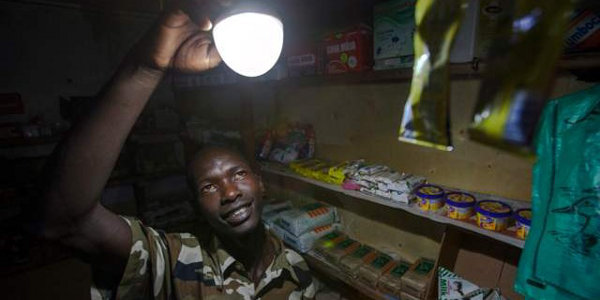Off-grid solar power booms in Africa
 More than 600 million people in Africa have no access to electricity, according to the International Energy Agency.
More than 600 million people in Africa have no access to electricity, according to the International Energy Agency.
But new technology could provide the solution. So-called off-grid solar systems have plummeted in price. Now consumers can spread the cost by renting the equipment and paying for the electricity as they need it, for less than a-half-dollar a day.
Lumos Global is among the firms rolling out the technology in Nigeria, alongside mobile phone operator MTN. The company’s CEO, Nir Marom, says installation is simple.
“He puts the solar system on the roof, and he puts the indoor unit in the home,” said Marom. “There is a cable to connect them. It is a plug on both sides, you do not need to be an electrician to do anything like this. And then you need to charge this [the rental] by credit. So the sun charges the electricity, but you need to provide the credit to power the system up, and you do this using your mobile phone.”
US invests in Nigeria systems
The company received financing from the US government’s Overseas Private Investment Corporation or OPIC, as part of President Barack Obama’s Power Africa initiative.
“So US$50m of OPIC money as debt toward the systems,” Marom said. “That will take us to 250,000 systems in Nigeria.”
Strong start in Senegal
As the off-grid sector booms, several African countries have also invested millions of dollars in large on-grid solar plants. Senegal opened one of Africa’s largest in October, able to generate 20 MW, enough for 160,000 people.
Chief executive Charlotte Aubi-Kalaidjian runs Greenwish Partners, which paid for the construction.
She says in Senegal the amount of electricity is double compared to what a solar farm of the same capacity in England or in northern France would produce.
The International Energy Agency forecasts that almost one billion people in sub-Saharan Africa will gain access to on-grid power by 2040.
But half-a-billion people will still be off-grid. Investors believe solar power could fill that gap, while also helping to reduce greenhouse gas emissions. – VOA

